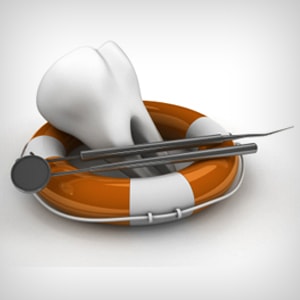Dental X-Ray El Paso TX
Benefits of X-rays
Tooth decay generally presents few physical signs during its early stages, and some dental conditions remain hidden until they are well advanced. Finding and treating dental problems at an early stage can save teeth, time, money and unnecessary discomfort. If you have a serious hidden tumor, early diagnostic X-rays could even help save your life.
X-rays also help determine the extent of a problem. Your dentist may be aware of tooth decay or periodontal gum disease but may need X-rays to determine both the extent and appropriate treatment of a problem.
What are X-rays?
Dental X-rays are an aid in detecting dental problems that are not visible during a clinical exam. They pose a far smaller risk than many undetected and untreated dental problems. X-rays are a form of radiation that can penetrate many materials, including human bone and teeth as well as soft tissues such as gums or muscles. Since they can also expose photographic films, X-rays have become an important diagnostic tool in dentistry. People often use the term X-ray to mean the pictures made using X-rays. The proper term for this X-ray image is a radiograph.
Why do I need dental X-rays?
Dental X-rays are extremely valuable for helping to detect oral diseases of the teeth and surrounding tissues. An X-ray exam may reveal small cavities that can’t be seen by a visual exam, infections in the bone, abscesses, cysts, developmental abnormalities such as extra or impacted teeth and some types of tumors. Just because such diseases, including early tooth decay, can't be seen by a visual exam does not mean that treatment isn’t required.
Is it safe to have dental X-rays taken?
Yes. Numerous precautions and advances in X-ray equipment help protect patients from receiving unnecessary radiation. The amount of radiation received from a dental X-ray exam is extremely small compared to other naturally occurring sources of radiation, including minerals in the soil, radon and cosmic radiation from outer space. A full-mouth series of films, using state-of-the-art technology, will deliver an effective dose that is equivalent to about 19 days of exposure to naturally occurring environmental radiation.
Dr. Bowden uses the latest technology in dentistry called digital radiography. Digital x-rays significantly reduce the amount of radiation exposure to the patient.
How often are dental X-ray exams necessary?
This depends on the patient’s individual health needs. If you are a new patient, the dentist may recommend X-rays to determine the current status of your mouth and to check for hidden problems. The need for radiographs varies according to your age, risk for disease and your past dental history.
Children may need X-rays more often than adults because their teeth and jaws are still developing and they are more prone to tooth decay. X-rays help the dentist discover developmental problems as early as possible so preventive or treatment measures can be started.
What can my dentist do to minimize exposure?
- Take X-rays only when necessary.
- Use a device that narrows the X-ray beam to cover only the area being examined.
- Use a lead apron or thyroid shield to protect your body and reproductive organs.
- Use a fast speed film to reduce exposure to a minimum.
- Use Digital X-rays











 Post-Op Instructions
Post-Op Instructions
 Prevention
Prevention
 Restoration
Restoration
 Orthodontics
Orthodontics
 Our Services
Our Services




